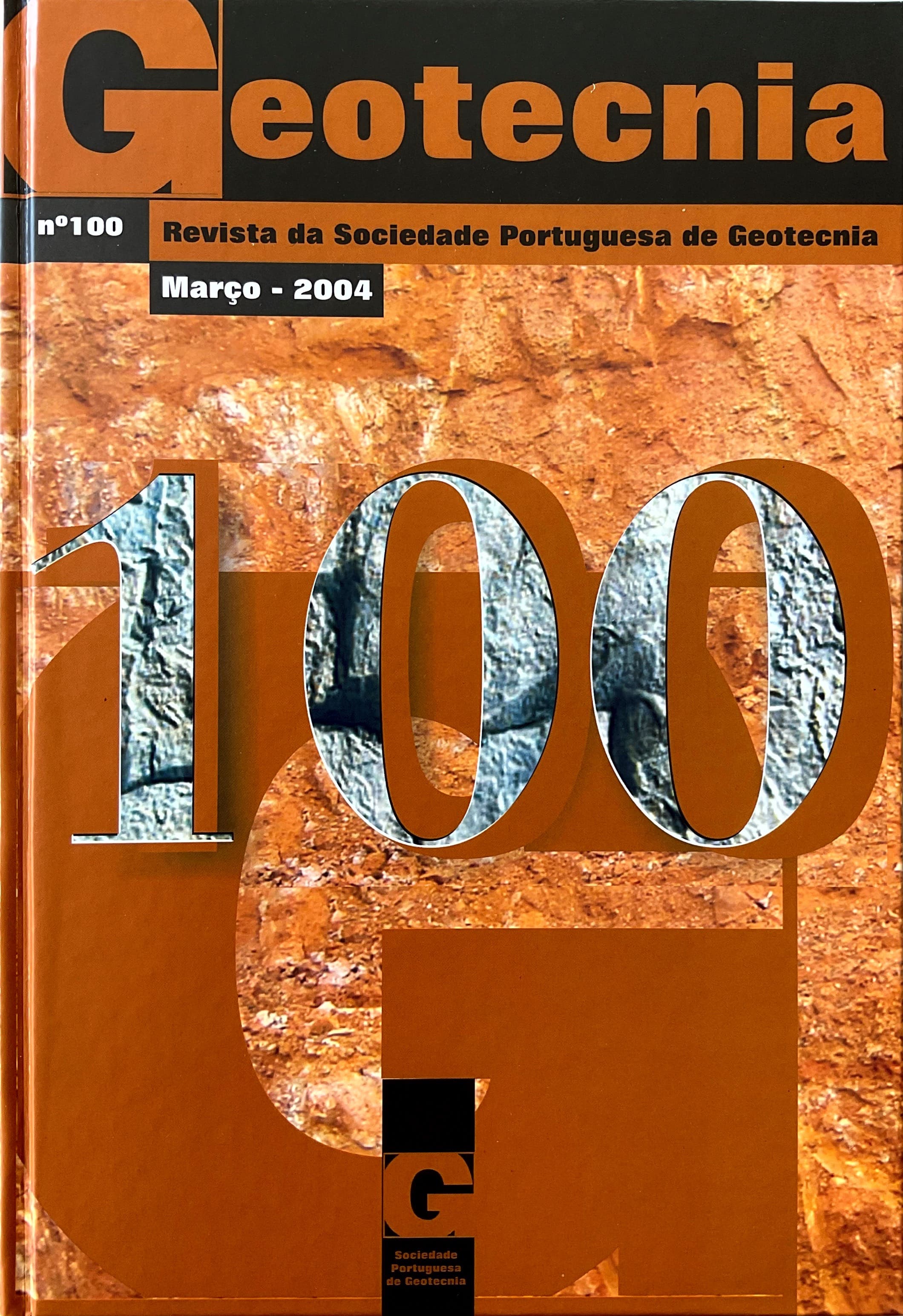The observational method and its application to Penalva Tunnel
DOI:
https://doi.org/10.14195/2184-8394_100_4Keywords:
Método observacional, túnel, Modelo geomecânico, Dimensionamento, Plano de observação, Critérios de alerta, Acções de contingência, Plano de emergênciaAbstract
The observational method constitutes a continuous process of design, construction control, monitoring and adjustment, able to allow for the inclusion of previously defined modifications and to attain economical advantages without compromising the safety of a given civil work. In this work, starting by the original proposal by Peck (1969), the basic concepts of the observational method arc presented along with the requirements that its application involves, namely the behaviour limits, the geomechanical model and design, the monitoring plan, the alarm criteria, the project modifications, and the contingency actions and the emergency plan. The application of this approach to the Tunnel of Penalva is described. It is tunnels in the North-South Crossing from REFER, located between Fogueteiro and Setubal, with a total length of 770 m and a cross section of 116 m2.
Downloads
References
Ahrens, H.; Lindner, E.; Lux, K.H. (1980). Zur Dimesionierung von Tunnelausbauten 11ach den Empfehlungen zur Berechnung von Tunne/n im lockergestein. Die Bautechnik, 59, pp. 260-311.
Atkinson, J. e Potts, D. (1977). Subsidence above shallow tunnels in soft ground. Journal of Geotechnical Engineering Division, ASCE, Vol. 103, No. GT4, pp. 307-325.
ClRIA (1999). The observational method in ground engineering: principles and applications. Report 185. CIRIA, London.
Figueiredo e Ferraz, Consultoria e Engenharia de Projeto, Ltda (2000). Projecto de Execução.
Hartmann, F. (1970). Elastizitatstheorie des ausgekleideten Tunne/hohlraumes und des eingebohrten Kreisformigen Rohres. Strasse, Brucke Tunnel 22.
Heinz, H. (1988). Large Cross Section Tunnels in Soft Ground. Ph.D. Thesis, Department of Civil Engineering, University of Alberta.
HSE (Health and Safety Executive) (1996). Safety of New Austrian Tunnelling Method (NATM) tunnels. A review of sprayed concrete lined tunnels with particular reference to London clay. HSE Books, Suffolk.
Levecque, M.F. (1995). Traversée souterraine de Toulon à Ia rencontre du tunnel Nord. Tunnels et Ouvrages Souterrains 132, Novembre/Décembre, pp. 351-354.
Longelin, R. (1993). Le prédécoupage mécanique fin 1992. Tunnels et Ouvrages Souterrains 116, Mars/Avril, pp. 99-102.
Muhlhaus, H. (1985). Lower bound solutions for circular tunnels in two and three dimensions. Rock Mechanics and Rock Engineering, 18, pp. 37-52.
Peck, R.B. (1969). Advantages and limitations of the observational method in applied soil mechanics. Geotechnique, 19 (2), pp. 171-187.
Olson, L.; Stille, H. (2002). Alarm thresholds and their use in design of underground openings. Int. Conf. on Probabilistics in Geotechnics, Graz, pp. 215-221.
Schwartz, C.; Einstein, H. {1980). Improved design of tunnel supports: Vol. 1 - Simplified Analysis for ground strcture interaction in tunnelling. Report UMT A-MA-06-0 I00-80-4.
Zagope - Figueiredo Ferraz (2000a). Concepção/ Construção do Túnel de Penalva (FE402). Projecto de Execução. Memória descritiva e justificativa de 14/08 /00.
Zagope - Figueiredo Ferraz (2000b). ). Concepção/ Construção do Túnel de Penalva (FE402). Relatório geológico-geotécnico. Relatório Técnico RT-00-GL04-00I de 10 de Outubro.
Zagope - Figueiredo Ferraz (2001). Estimativa de assentamentos e limites de referência para instrumentação. Relatório Técnico RT-00-TU99- 002 de 28 de Mar90.
Zagope - Figueiredo Ferraz (2001a). Considerações sobre a aplicação do método do pré-corte e do acompanhamento e controle de sua execução. Relatório Técnico RT-00-TU99-005 de 17 de Abril.




